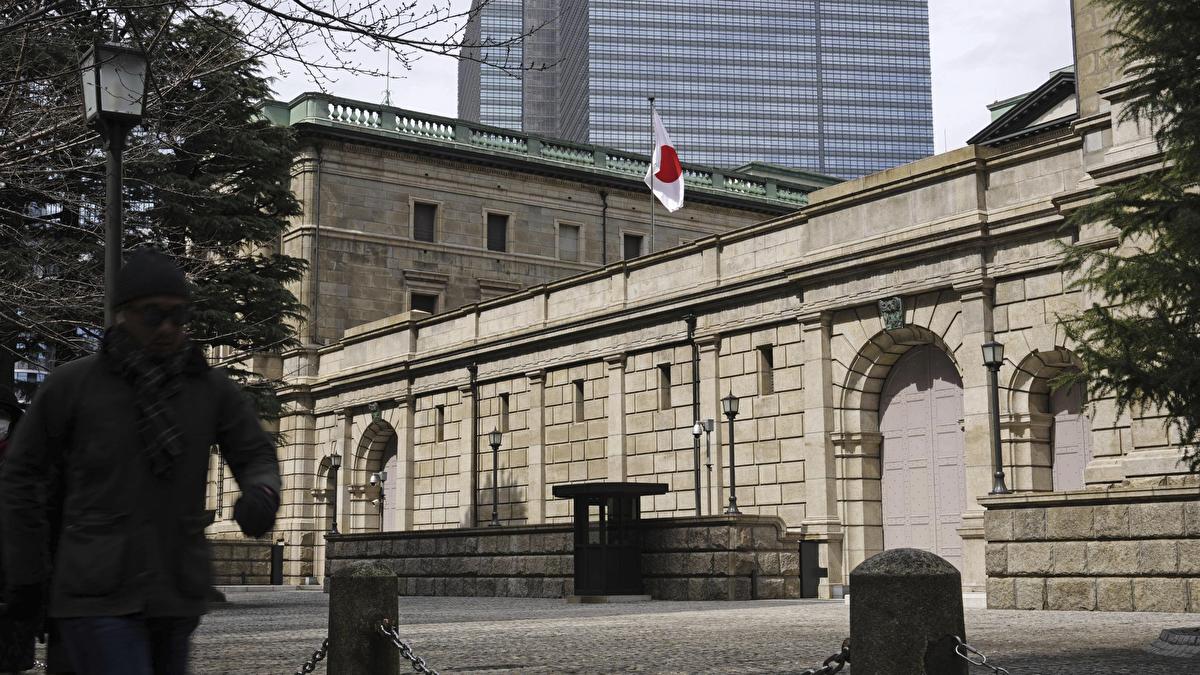
The Bank of Japan’s June 14 announcement that it will reduce the scale of its long-term government bond purchases while leaving short-term interest rates unchanged is seen as a move toward monetary policy normalization by experts, who said it could alleviate some of the pressure on the depreciating yen.
“This move marks the beginning of the BOJ’s shift from its ultra-loose monetary policy toward normalization, which could have a significant impact on the Japanese economy and global financial markets,” said Marco Sun, chief financial analyst at MUFG Bank (China).
Japan’s central bank said it will gather input from market participants and will outline a detailed plan for reducing its bond purchases over the next one or two years at its next monetary policy meeting in July. At the end of 2023, the BOJ’s government bond holdings totaled 581 trillion yen ($3.69 trillion).
As the largest buyer of Japanese government bonds, the BOJ’s reduction in bond purchases could lead to a rise in long-term interest rates in Japan, thereby narrowing the interest rate differential between Japan and the United States, Marco Sun, chief financial analyst at MUFG Bank (China)
The market widely expects that the BOJ will announce a modest reduction in its monthly purchases of Japanese government bonds from approximately 6 trillion yen to 4 trillion yen, to avoid a sudden surge in yields, Sun said.
As the largest buyer of Japanese government bonds, the BOJ’s reduction in bond purchases could lead to a rise in long-term interest rates in Japan, thereby narrowing the interest rate differential between Japan and the United States, he said. This narrowing of the differential typically attracts more capital inflow into Japan, increasing demand for the yen, and thus supporting the yen’s exchange rate, Sun explained.
Additionally, Japan’s import-driven inflation has become an undeniable driver of overall inflation. According to the BOJ’s forecast, Japan’s year-on-year increase in the consumer price index could be between 2.6 percent and 3 percent for the current fiscal year ending March 31 next year.
ALSO READ: Bank of Japan to trim bond buying, keeps rates steady

At its monetary policy meeting in March, the BOJ decided to guide overnight lending rates to a range of 0 to 0.1 percent, slightly up from the previous range of minus 0.1 to 0 percent, effectively ending eight years of negative interest rates.
Sun predicted that the BOJ will raise its policy rate again in July, expecting an increase of 15 basis points to 0.25 percent. In this context, the rise in Japanese government bond yields might be relatively limited.
Meanwhile, the US Federal Reserve on Wednesday signaled that it will cut its key interest rate just once this year. Therefore, the narrowing of the Japan-US bond yield spread might be limited but it will still help alleviate the pressure of the yen’s depreciation to some extent, Sun said
Meanwhile, the US Federal Reserve on Wednesday signaled that it will cut its key interest rate just once this year. Therefore, the narrowing of the Japan-US bond yield spread might be limited but it will still help alleviate the pressure of the yen’s depreciation to some extent, he said.
Sun predicted that in the second and third quarters of this year, the dollar-yen exchange rate will range between 150 and 163.
Naka Matsuzawa, chief strategist at Japan’s Nomura Securities, said the market expected a reduction in purchases of 1 trillion yen of Japanese government bonds per month, falling from the current about 6 trillion yen to 5 trillion yen.
A reduction plan that extends over the next two years goes further than market forecasts but the more that market feedback is gathered and reflected in the plan, the more it is likely to be in line with market forecasts and set a cautious pace of reductions, said Matsuzawa in a report released on Friday.

The Japanese yen has weakened to levels that necessitate a response from policymakers, the report said. It falls to the Japanese government and Ministry of Finance to take measures to address the depreciation of the yen next, according to Matsuzawa.
Foreign exchange market interventions also remain a possibility, said Naka Matsuzawa, chief strategist at Japan’s Nomura Securities. Given the shrinking gap between US and Japanese yields, it would not be surprising if the Ministry of Finance intervened by buying yen and selling dollars before the exchange rate reaches 160, Matsuzawa said
The BOJ responded by deciding on a quantitative tightening policy at its recent meeting. Moreover, compared to Japan’s previous foreign exchange interventions between April 26 and May 29, yields on the US 10-year Treasury note have decreased while Japan’s 10-year government bond yields have risen. This has narrowed the yield differential between the US and Japan, indicating that the BOJ has partly fulfilled its responsibility to curb the yen’s weakness, Matsuzawa said.
Foreign exchange market interventions also remain a possibility, he said. Given the shrinking gap between US and Japanese yields, it would not be surprising if the Ministry of Finance intervened by buying yen and selling dollars before the exchange rate reaches 160, Matsuzawa said.
READ MORE: Japan's economy skids, clouding BOJ's rate hike plans
If the US stock market continues to rally and the Federal Reserve maintains its hawkish stance, the market might reduce the number of rate cuts expected this year to match the Fed’s projections. In response, the BOJ might be compelled to take further action, such as raising rates, to address the yen’s weakness, Matsuzawa added.


